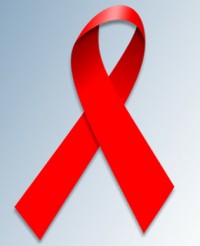New IMA Conference Presentation Details the Success and Potential of Scaling Up Integrated Cervical Cancer Screening with HIV/AIDS Services in Health Facilities
Authors: Sr. Margaret Ishengoma, (IMA/Tanzania), Dr. January Zilabumba (IMA/Tanzania), Theresa Nyamupachitu (IMA/Washington, DC)
Offering low-cost cervical cancer screening is a successful strategy for identifying HIV/AIDS clients and enrolling them into further care, according to a presentation by IMA World Health’s Tanzania team at the International Conference on HIV/AIDS and STIs in Africa (ICASA) in Zimbabwe.
 Cervical cancer is a real and increasingly deadly threat to adult women living in Tanzania. Due to rising HPV and HIV incidence and a lack of screening and treatment, Tanzania ranks sixth in the world with the highest burden of cervical cancer, with more than 14 million women at risk.
Cervical cancer is a real and increasingly deadly threat to adult women living in Tanzania. Due to rising HPV and HIV incidence and a lack of screening and treatment, Tanzania ranks sixth in the world with the highest burden of cervical cancer, with more than 14 million women at risk.
HIV/AIDS exacerbates women’s risk of developing cervical cancer. Women living with HIV are eight times more likely to develop invasive cancer compared to their HIV-free counterparts. We’ve seen this first hand. Tanzanian women living with HIV used to often report to health facilities with late stages of cervical cancer.
Resource constraints mean that the traditional paradigm of cytology-based screening (pap smears) are not feasible in Tanzania. Following government guidelines, IMA has rolled out the Visual Inspection with Acetic Acid (VIA) and the Single Visit Approach (SVA). Using a simple swab of acetic acid on the cervix and several other techniques, healthcare workers are able to detect precancerous lesions and treat them with cryotherapy on the same day, reducing the risk of the women contracting cervical cancer or failing to complete her referral for treatment. Women are also screened for HIV on the same day. If found HIV positive, they are immediately linked to HIV care and treatment at the same site, and if found HIV negative, receive HIV prevention education. To generate demand, IMA has worked in tandem at the community level to integrate messaging into ongoing routine HIV testing campaigns.
VIA and SVA are cost-effective methods for detecting cervical cancer. A bottle of Acetic Acid (vinegar) costs $3.50 and can run 90 tests and a gas tank of 25kg costs $35 and run between 20 – 25 tests. VIA and SVA are also much simpler for health care workers to implement. We are able to train nurses and other non-physicians to conduct the counseling and testing, reducing the workload of more expensive healthcare workers.
And the program is yielding success to date in achieving its goals of finding and treating more cases of cervical cancer. The program routinely screens 450 women per month, reaching nearly 24,000 women to date (with 100% screening among women living with HIV). Among our most notable findings shared at ICASA:
- Cervical cancer is a major health concern among women – around six percent of clients screened have some form of cervical cancer.
- Integrated HIV/cervical cancer screening approaches and fast tracking mean women get the critical services that they need in one stop – 86 percent of women screened with VIA positive results were treated on the same day.
- Cervical and breast cancer screening for all women provides an attractive entry point for identifying new HIV clients – 36 percent of women screened for cervical cancer were HIV-positive and enrolled into care and treatment services.
Some highlighted recommendations include:
- Exploring the potential for integrating HPV preventative vaccination into community mobilization and health facility services. Studies have shown that the combination of HPV vaccination and cervical screening can provide the greatest protection against cervical cancer.
- Ensuring all Regional Hospitals possess cervical cancer biopsy and treatment machines to strengthen referral completion for more advanced cases.
- Integration of CECAP into all women’s health care services to enable continuous program strengthening and sustainability.
As IMA reflects on its work this World AIDS Day, the new presentation and stocktaking provides valuable insights to IMA, other global health implementers, governments and agencies to design and deliver cervical cancer services. Findings from Tanzania suggest that integrating cervical cancer interventions with HIV/AIDS services offer an optimal platform for smart resource use and improved health outcomes.


